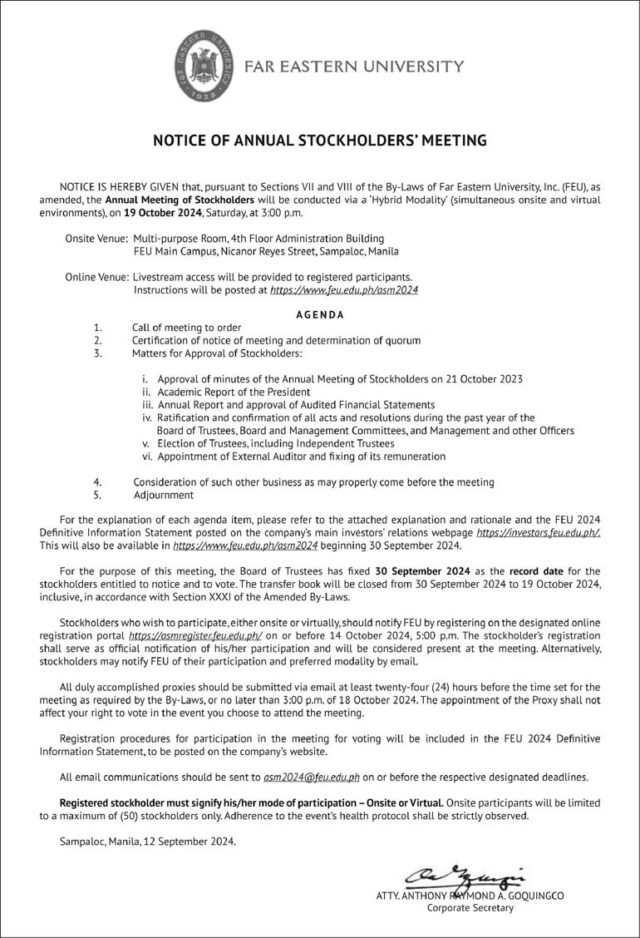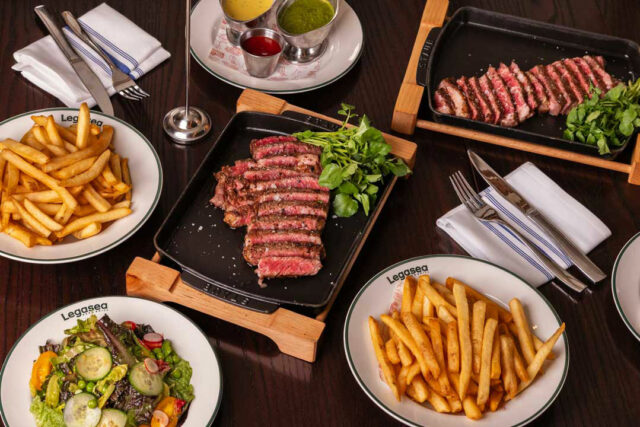(First of two parts)
A soldier on a mission uttered that exclamation under his breath as he realized that his squad of eight men was cornered by hundreds of the enemy.
That was just a movie, by the way, but the remark captures the kind of spirit any manager would wish to see in his team.
“Now where does one get an employee like that?” I recall asking myself in jest, as I watched that flick a few years back.
It is probably the kind of question that pops up in the minds of managers across industries when faced by some employees’ less-than-optimal performance. The culprit, however, may not necessarily boil down to flawed attitudes. Casual conversations with peers from various companies left me with the impression that many have been bewildered by changing behavior and priorities in the workforce, especially over the past decade.
IT’S THEIR TIME
It just so happens that the next few years will increasingly be the age of Gen Zs — those born from 1995 to 2010 — who are expected to make up a growing chunk of any work force, even as Gen Y/millennials (those born 1981-1996) will dominate organizations and assume more business helms until the early 2040s.
In fact, that is one of the Philippines’ (and other Southeast Asian markets’) most compelling come-ons to investors from developed economies with their fast-aging populations: our growing pool of young workers.
Latest available final data of the Philippine Statistics Authority show that those aged 15-24 years made up 14.6% of the country’s labor force (employed and unemployed) and 13.2% of those with jobs as of July 2021, trailing people aged 25-34 years (28.6% of the labor force, 28.2% of those employed), 35-44 (23.4% of the workforce, 24.1% of those with jobs) and 45-54 (18.3% of the labor force, 18.9% of those with jobs). But it is a demographic that, at least according to some expectations, will account for up to a third of the Philippine work force in two years as Baby Boomers — those born between 1946 to 1964 —bow out and as a few of the Gen X (1965-1980) start doing so.1
Gen Zs are expected to make up a fourth of the global population by 2030, and while they now make up “a smaller percentage of working adults than other generations, meeting their needs is an important consideration for employers.”2
So, there is this growing pool of talent out there, but then, what makes them tick?
That is a million-dollar question for anyone keen on maximizing all his business’ resources. Without dehumanizing workers as individuals, managers have increasingly realized that they need to understand the nature of this particular resource if the company is to get the best out of each one.
Forcing lessons from one’s own unique experience on younger generations with their own value sets, i.e., “if I could do it, why can’t they?,” would be like forcing a nut on to an over- or undersized screw and still expecting it to do the job, and results in these youngsters just leaving for other options, which (unfortunately for any employer) abound. Guess who ends up on the losing end.
FIRST THINGS FIRST
The importance of this topic is borne by the growing literature on it, such that there is no lack of prescriptions on how to attract and retain Gen Zs.
According to 2022 study on Gen Zs in the Philippines, key factors in choosing work were salary, opportunities for career growth, and that the job jibed with their advocacy or at least was meaningful to society.3
One overarching priority for this demographic is that their work “must mean something,” making them part of something bigger than themselves that benefits society, or at least a segment of it. In a chat earlier this month, an executive of advisory, broking and solutions provider Willis Towers Watson (WTW) noted that more and more entrepreneurs — increasingly composed of millennials and Gen Zs — have been incorporating a social or environmental (or both) mission to their businesses. Remember that this is a generation that was born and grew up at a time of heightened awareness of climate risks: the first United Nations Climate Change Conference meeting was held in Berlin, Germany in March 1995, while the legally binding Paris Agreement for climate change mitigation was adopted in Paris, France in December 2015.
“Differentiate your company with strong CSR initiatives,” read one article on online job platform SEEK. “Corporate social responsibility (CSR) is a dark horse in attracting Gen Z. These talents are no longer content with just having a job. They are looking for a career with a purpose that would enable them to realize their vision and make a difference in humanity, the world and its future.4
Deloitte’s 2023 Gen Z and millennial survey in the Philippines showed that “more that 60%” of Filipino millennials and Gen Zs rejected a potential employer or an assignment when they perceived that these violated their beliefs.
Now, there may be sectors that are more inherently imbued with public interest and social/environmental relevance than others, but that does not excuse any lack of or poor communication of such priorities to the workforce. Besides outright, clear communication of such values, organizations — starting from the top — must actually live them, for actions always speak louder than words. Younger generations of workers are no fools and can smell BS a mile away.
Gen Z’s generally altruistic leaning does not mean that wage levels do not matter, or even matter less than this factor does to their predecessors, according to the WTW executive, while an officer of career platform Handshake noted that Gen Zs, “unlike some older colleagues,” are more wont to discuss salaries with peers and, in some cases, even seek salary audits.5
“This is to be expected,” said the WTW executive, since Gen Zs need to be able to afford their many activities outside work, including vacation trips abroad, in their quest for work-life balance.
Hence, it is advisable to regularly benchmark salaries — at least every other year — against those in the industry and even against those of allied sectors which could indirectly compete for one’s talent. So, this exercise goes beyond just making sure that wages are not eroded by inflation (WTW tracked a median 5.7% salary increase in the Philippines in 2023 and expects roughly the same pace this year, vs. an actual 6% inflation in 2023, 3.6% in the eight months to August, as well as the central bank’s 2-4% inflation target range and 3.4% latest forecast for 2024.)6
And, especially if a company cannot compete when it comes to wages, it may also need to lighten up on absolute bans on moonlighting, provided that the other job/s are not direct competitors. A 2023 Deloitte study on Millennials and Gen Zs showed that 71% of Filipino Millennials (compared to 37% of global Millennials) and 65% of Filipino Gen Zs (compared to 46% of global Gen Zs) have taken on either a part- or full-time paying job on top of their primary job — compared to 61% and 64%, respectively, in 2022. Asked why they decided to take on a side gig, 66% of millennials and 56% of Gen Zs said they needed a secondary income source, while about 40% of both groups said their side job helps them develop important skills and relationships. Moreover, more than half of Filipino Millennials (58%) and Gen Zs (59%) said they lived paycheck to paycheck and worry that they won’t be able to cover expenses.7
There should just be clear parameters to ensure that such employees will perform their main jobs competently, as well as an agreement that they will have to choose should holding multiple gigs prove untenable.
(To be continued)
1https://www.pluxee.ph/blog/heres-what-you-really-need-to-know-about-the-gen-z-workforce/
2https://www.axios.com/2023/11/22/gen-z-boomers-work-census-data
3“Generation Z in the Philippine Labor Force: Profile, Perspectives and Prospects,” Athena Mari E. Son, ILS Working Papers 2022
4https://ph.employer.seek.com/market-insights/article/here-comes-gen-z-but-are-you-ready
5https://www.axios.com/2023/11/05/gen-z-workplace-communication
6https://www.wtwco.com/en-ph/news/2024/01/philippines-pay-raises-continue-to-trend-upwards-in-2024-wtw-survey-finds
7https://www2.deloitte.com/ph/en/pages/about-deloitte/articles/2023-millennial-survey.html
Wilfredo G. Reyes was editor-in-chief of BusinessWorld from 2020 through 2023.









![BSP_3822-1024x683 [BW file photo]](https://www.bworldonline.com/wp-content/uploads/2024/04/BSP_3822-1024x683-BW-file-photo-640x427.jpeg)






